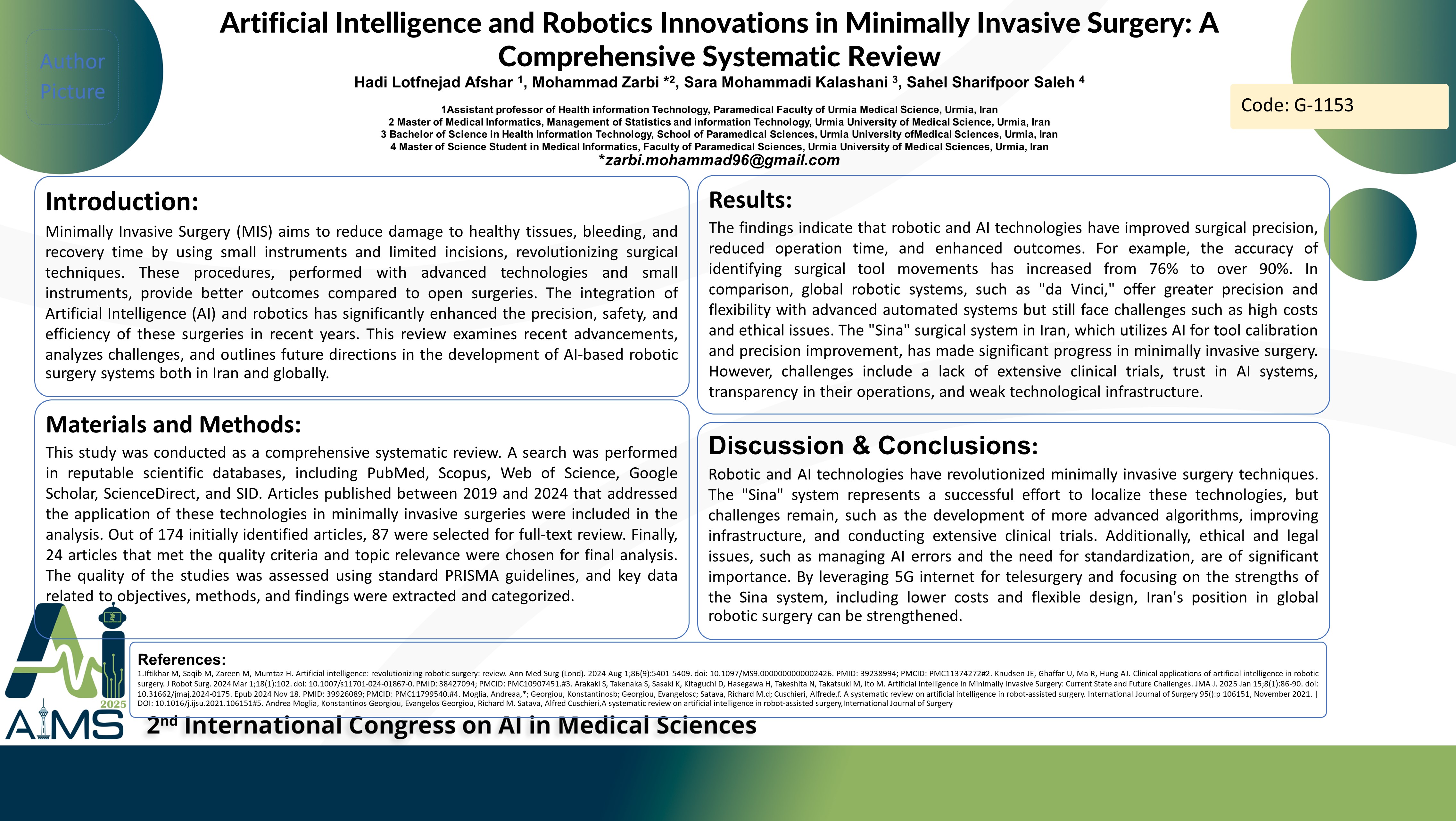Artificial Intelligence and Robotics Innovations in Minimally Invasive Surgery: A Comprehensive Systematic Review
Code: G-1153
Authors: Hadi Lotfnejad Afshar, Mohammad Zarbi *, Sara Mohammadi Kalashani ℗, Sahel Sharifpoor Saleh
Schedule: Not Scheduled!
Tag: Robotics in Surgery and Care
Download: Download Poster
Abstract:
Abstract
Background and Objective: Minimally Invasive Surgery (MIS) aims to minimize tissue damage, bleeding, and recovery time by utilizing smaller instruments and incisions, significantly improving surgical outcomes compared to traditional open surgeries. Over recent years, the integration of Artificial Intelligence (AI) and robotics into these procedures has enhanced their precision, safety, and efficiency. This review provides a comprehensive analysis of the latest advancements in AI and robotic-assisted surgery, discussing the challenges faced, and highlighting potential future directions in both Iran and globally. Method: A thorough systematic review was conducted by searching respected databases, including PubMed, Scopus, Google Scholar, and SID. Studies published between 2019 and 2024 were considered if they explored the use of AI and robotics in minimally invasive surgeries. After an initial review of 174 articles, 87 were selected for full-text evaluation, with 14 meeting the inclusion criteria. The quality of these studies was assessed using PRISMA guidelines, and relevant data were extracted and categorized. Results: The findings highlight significant improvements in surgical precision, reduced operation times, and enhanced clinical outcomes through robotic and AI technologies. For example, the accuracy of tracking surgical tool movements has risen from 76% to over 90%. Globally, systems like the "da Vinci" have offered improved precision and flexibility, but they still face challenges related to cost and ethical concerns. In Iran, the "Sina" surgical system, which uses AI to enhance tool calibration and precision, has made remarkable strides in MIS. However, there are still issues to address, such as a lack of extensive clinical trials, public trust in AI, and technological limitations. Conclusion: AI and robotics have transformed minimally invasive surgery, with systems like "Sina" marking a notable achievement in the localization of these technologies. However, ongoing efforts are needed to develop more sophisticated algorithms, improve infrastructure, and conduct large-scale clinical trials. Additionally, ethical considerations, such as managing AI errors and the need for standardized practices, remain critical. With the potential for advancements like telesurgery enabled by 5G networks, Iran's standing in the global robotic surgery field could be significantly strengthened by addressing these challenges.
Keywords
Artificial Intelligence, Robotics, Minimally Invasive Surgery
